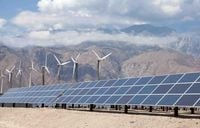On July 4, 2025, President Donald Trump signed into law the One Big Beautiful Bill Act (OBBBA), a sweeping piece of legislation that has sent shockwaves through the American clean energy sector and beyond. The law, combined with a series of new executive orders and agency directives, has upended the landscape for solar and wind energy projects across the United States, with Arizona now standing at the epicenter of the fallout. As federal support for renewables vanishes and regulatory burdens grow, billions of dollars in investments, thousands of jobs, and the future of the nation’s energy mix hang in the balance.
The OBBBA’s impact is immediate and far-reaching. According to The Tax Foundation, the elimination of green energy tax credits will remove approximately $500 billion in federal aid over the next decade—a seismic shift for an industry that has relied on these incentives to compete with fossil fuels. The law also introduces accelerated timelines for technology-neutral tax credits, replacing the previous emissions-based system put in place by the Inflation Reduction Act (IRA). Projects must now be under construction by July 4, 2026, and in service by the end of 2030 to qualify for any remaining credits. As Wood Mackenzie noted in a mid-July 2025 report, wind and solar are poised to suffer the most from these abrupt changes, with many developers already shelving or canceling projects.
Arizona, a state long seen as a rising star in the solar industry, is feeling the brunt of these new policies. In July, Interior Secretary Doug Burgum issued a memo that requires his personal approval for all solar and wind energy projects on federal lands. This directive, combined with the loss of tax credits, has put three major solar projects in jeopardy. Together, these projects represent $1.6 billion in investments and would generate more than 1.1 gigawatts of electricity—enough to power nearly 260,000 homes. According to Atlas Public Policy, their cancellation could cost the state 213 permanent jobs and 3,600 construction jobs. Only Nevada faces a bigger hit under the Trump administration’s new rules.
The ripple effects extend well beyond the clean energy sector. Arizona’s 151 data centers—ranking seventh nationally—consumed more than 1.5 gigawatts of electricity in 2024, a demand that’s only expected to grow with the rise of artificial intelligence and cloud computing. Yet, as federal support for renewables fades, utility rates for Arizona Public Service customers are projected to jump by double digits in 2026. For many households, that means higher bills and fewer options for relief.
It’s not just Arizona feeling the strain. Nationwide, the Department of Transportation has cut $689 million in funding for offshore wind developments, including $427 million pledged to the Humboldt Bay Offshore Wind project in northern California, CNBC reports. The Trump administration has also pressed pause on wind-power projects that are near completion, such as the Revolution Wind Project off Rhode Island, where 45 of 65 turbines have already been installed. The Bureau of Ocean Energy Management has opened a new review of the project, citing “national security interests,” according to the Associated Press.
For many clean energy companies, the outlook is grim. Kevin Smith, CEO of Arevon, a major solar energy firm, warned CNBC, “The small- and medium-sized players that can’t take the financial risk, some of them will disappear.” This prediction is already coming true in Arizona, where a string of bankruptcies has hit solar installation companies and manufacturers over the past six months. Electric vehicle manufacturer Nikola laid off 855 workers in February 2025, citing policy uncertainty. In May, U.S. solar panel maker Meyer Burger shuttered its Goodyear factory, which had been built thanks to IRA incentives now rolled back under the new law. A $1 billion battery plant in Buckeye, expected to create over 6,000 jobs, was scrapped, and a major electric boiler and solar array project in Casa Grande was canceled after its funding was cut by the U.S. Department of Energy.
The policy shift is not limited to the loss of tax credits. The OBBBA, backed by a series of executive orders, categorizes green energy sources as “unreliable” and makes them ineligible for federal support. The Treasury Department has been directed to terminate clean energy production and tax credits for wind and solar facilities, while foreign investment in renewables faces significant new restrictions. The Solar for All grant program, established under the IRA and managed by the Environmental Protection Agency, has been terminated, cutting off $7 billion intended to bring solar power to lower-income communities.
These moves have drawn fierce criticism from environmental advocates and some lawmakers. At a recent climate meeting at the Nina Mason Pulliam Rio Salado Audubon Center, U.S. Rep. Yassamin Ansari called the Trump administration “the most anti-climate, anti-environment administration in the history of the United States.” She vowed to “push back relentlessly against these cuts,” describing the current moment as a “dystopian time” for the country’s climate policy.
But not everyone is left without options. For lower-income households struggling with rising energy bills, federal programs such as the Low Income Home Energy Assistance Program (LIHEAP) and the Weatherization Assistance Program (WAP) remain available to help with heating, cooling, and efficiency upgrades. For those with the means, investing in do-it-yourself solar panel systems or joining local energy co-ops—like Solar United Neighbors in Colorado or Washington Electric Co-Op in Vermont—offers a path to lower bills and greater energy independence, as highlighted by Popular Mechanics and Co-op News.
Meanwhile, the OBBBA’s changes have created clear winners and losers in the energy sector. Oil and gas companies have benefited from the removal of regulatory barriers and new areas opened for exploration. Nuclear and geothermal energy, while facing their own challenges, have fared better: projects already in operation or under construction by 2033 retain their tax credits, and advanced nuclear facilities near energy communities are eligible for a new 10% bonus credit. Geothermal investment is growing, buoyed by bipartisan support and the adaptation of advanced drilling techniques from the oil and gas industry. Companies like Fervo Energy and Ormat Technologies are pushing ahead with major projects in Utah and Nevada, and tech giants such as Google and Microsoft are entering power purchase agreements to supply their data centers with geothermal and nuclear energy.
Still, for solar and wind, the future looks uncertain. Developers are scrambling to secure land, complete environmental studies, and prepare for a legislative environment that could change yet again. Some are eyeing international markets, with the European Union’s Hydrogen Bank poised to fill the gap left by the dissolution of U.S. clean hydrogen hubs. As the U.S. pivots away from supporting renewables, the risk is that it will fall behind in the global race for clean energy innovation and sustainability.
For now, the nation’s energy future remains in flux, shaped by a dramatic about-face in federal policy. As Arizona and other states grapple with the consequences, the choices made in Washington will reverberate from households to boardrooms—and from the desert Southwest to the coasts—for years to come.


